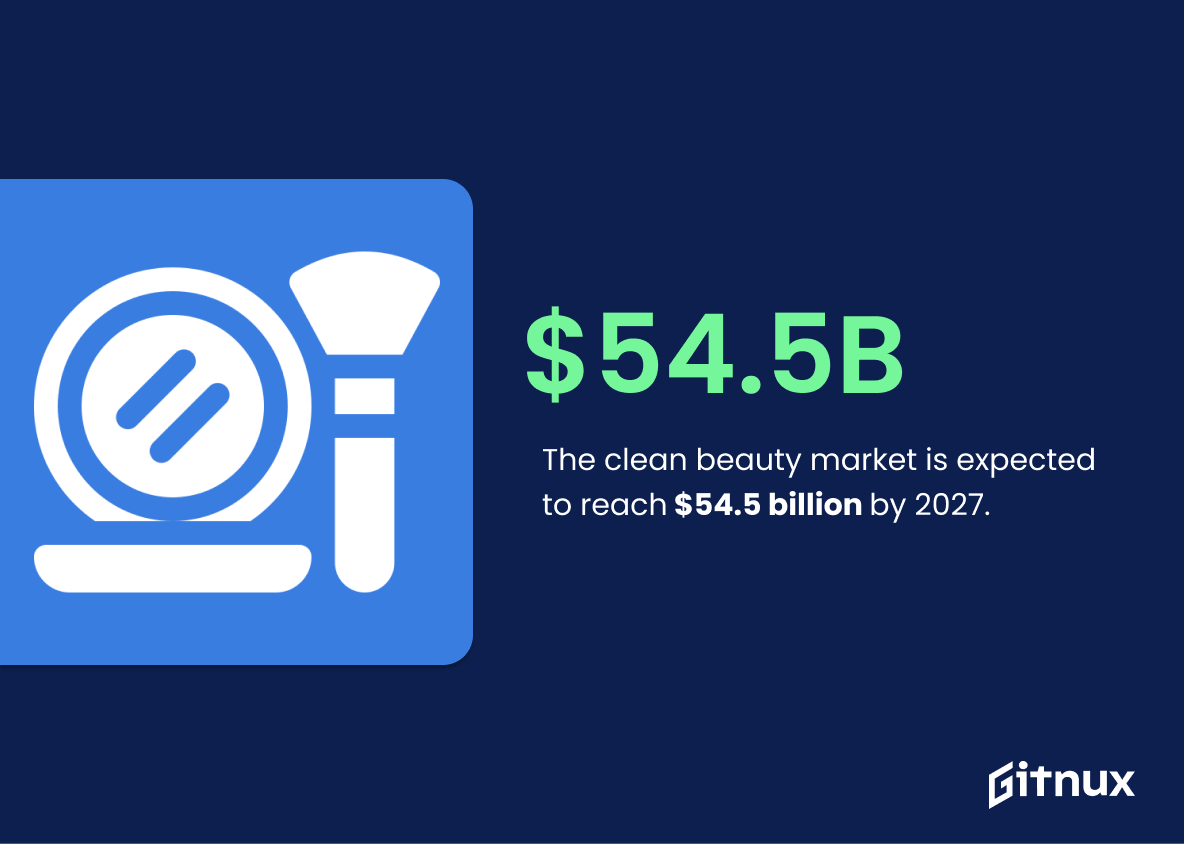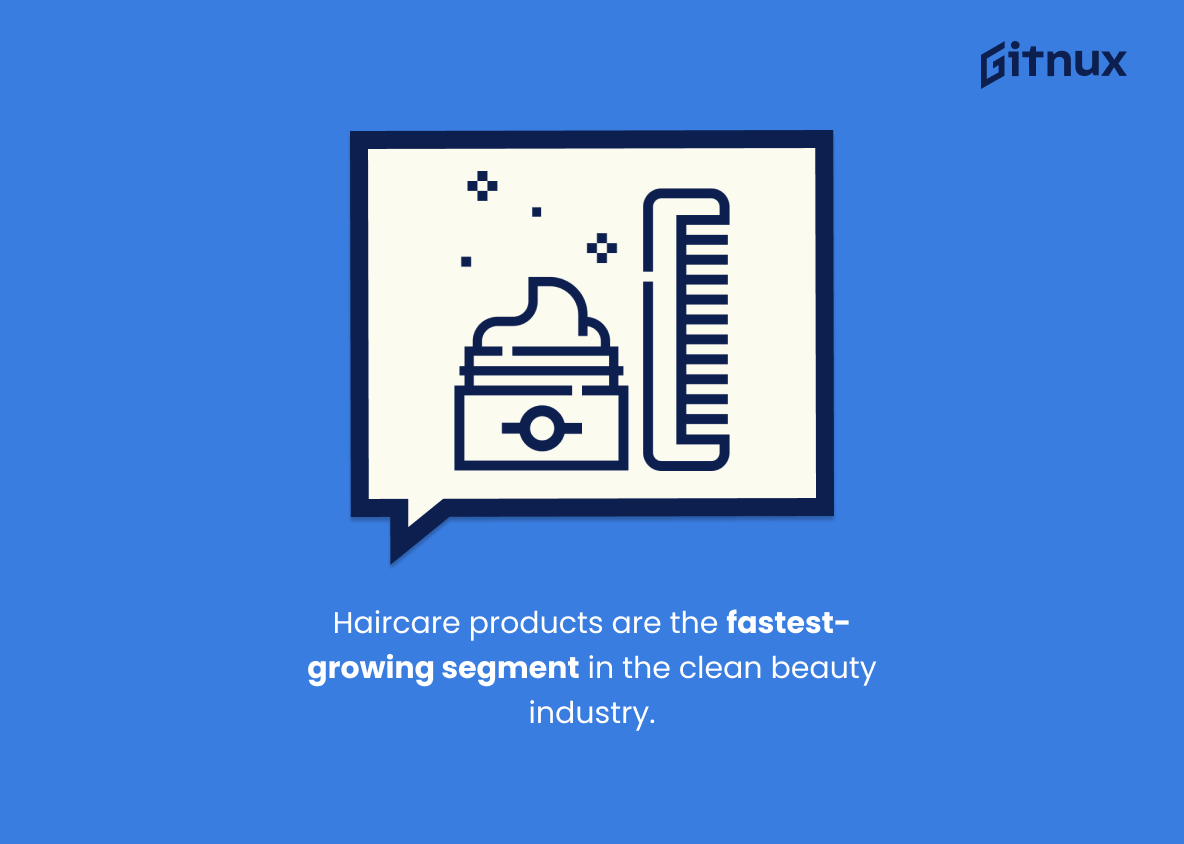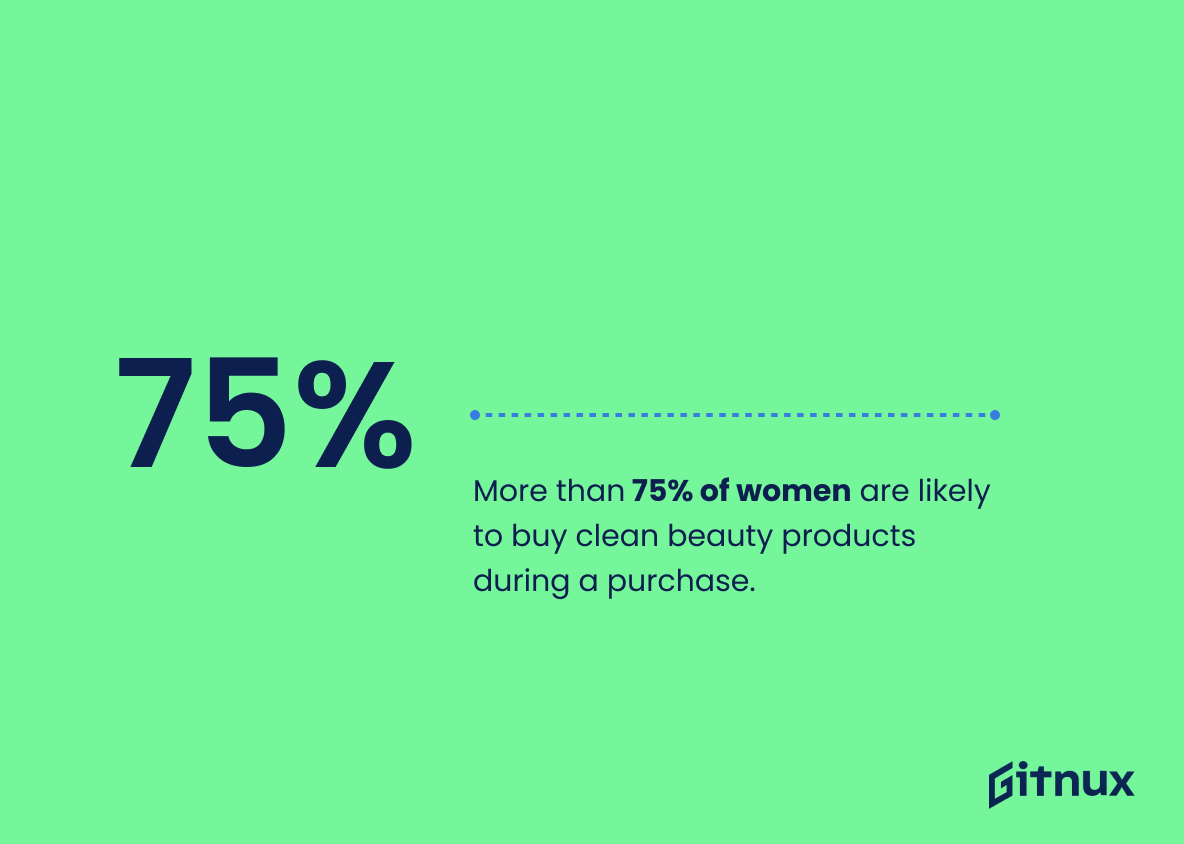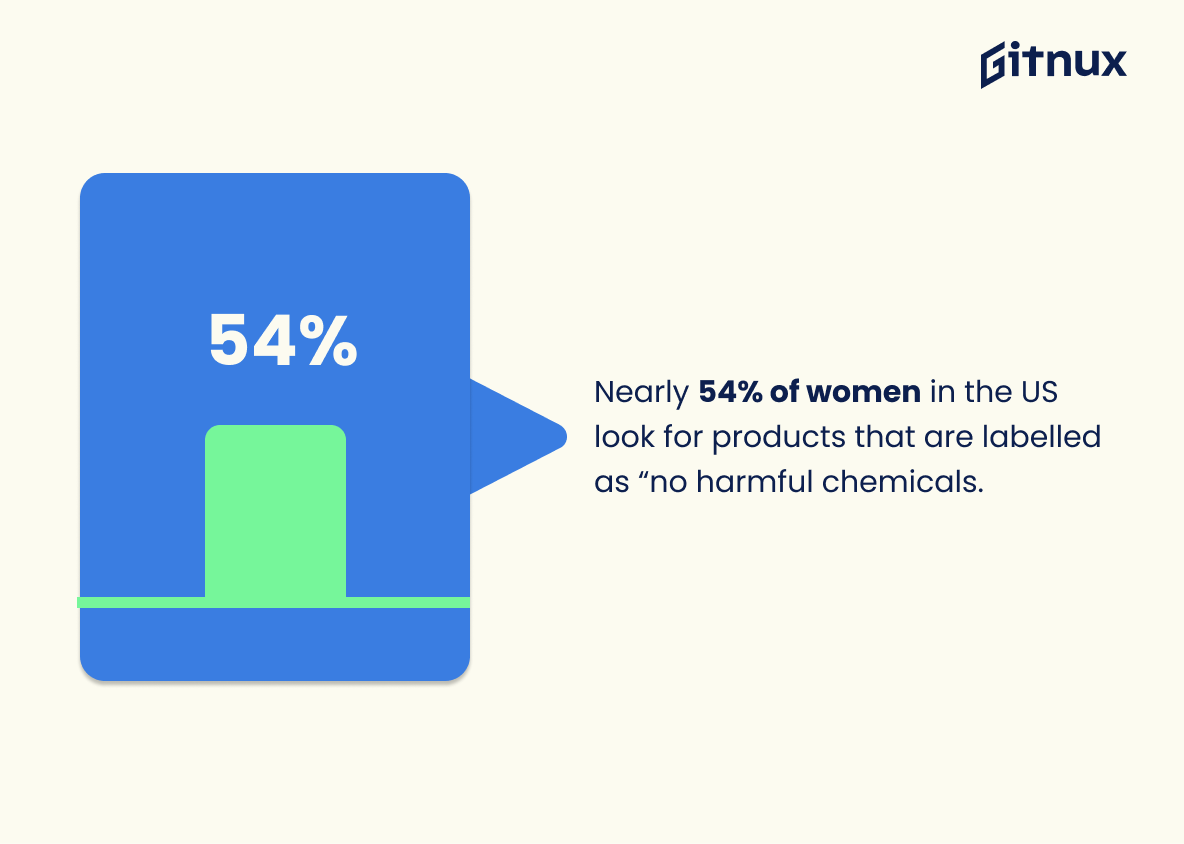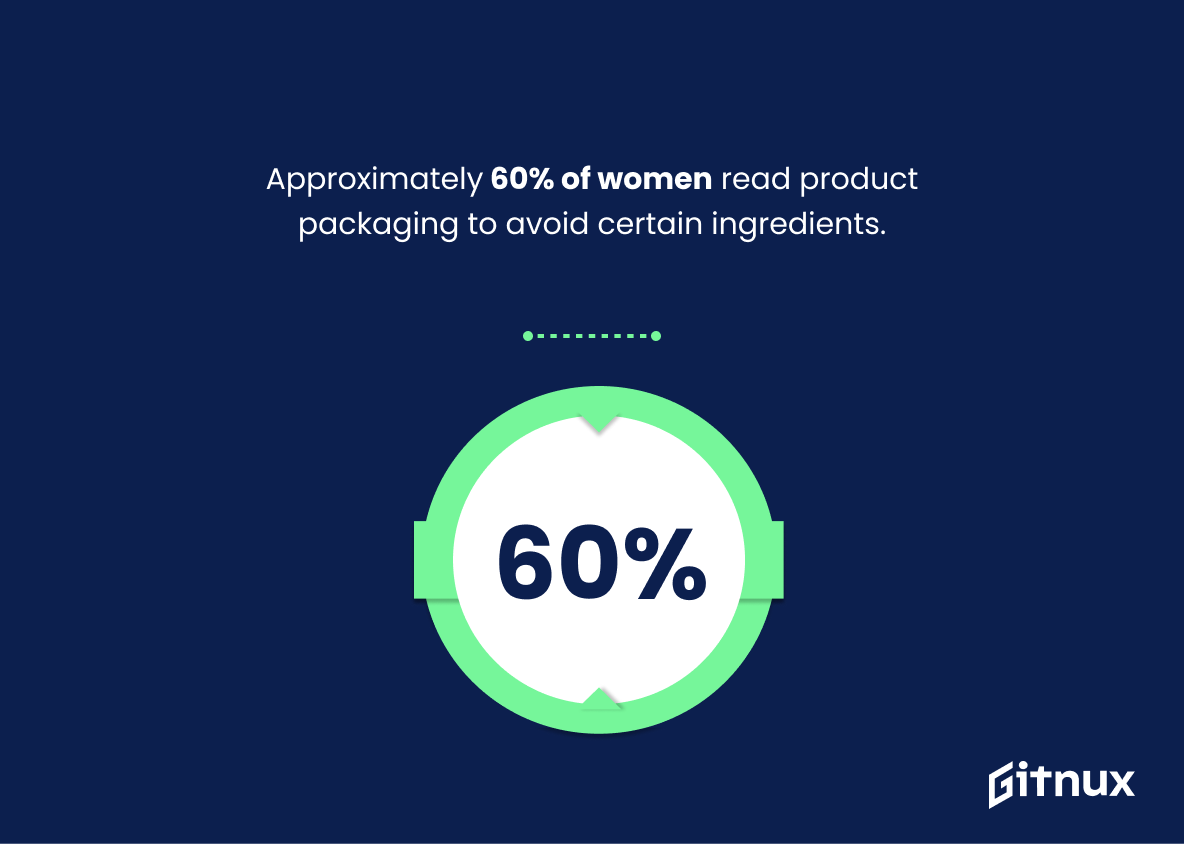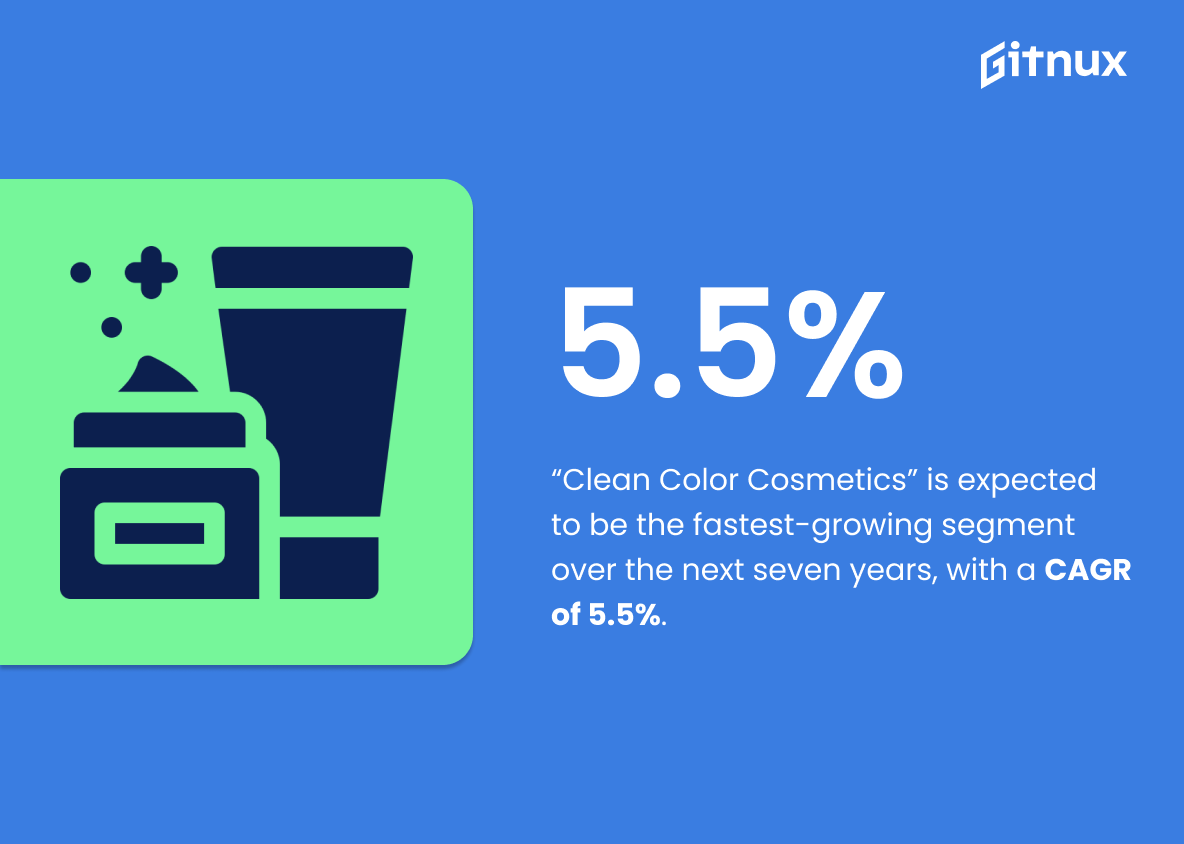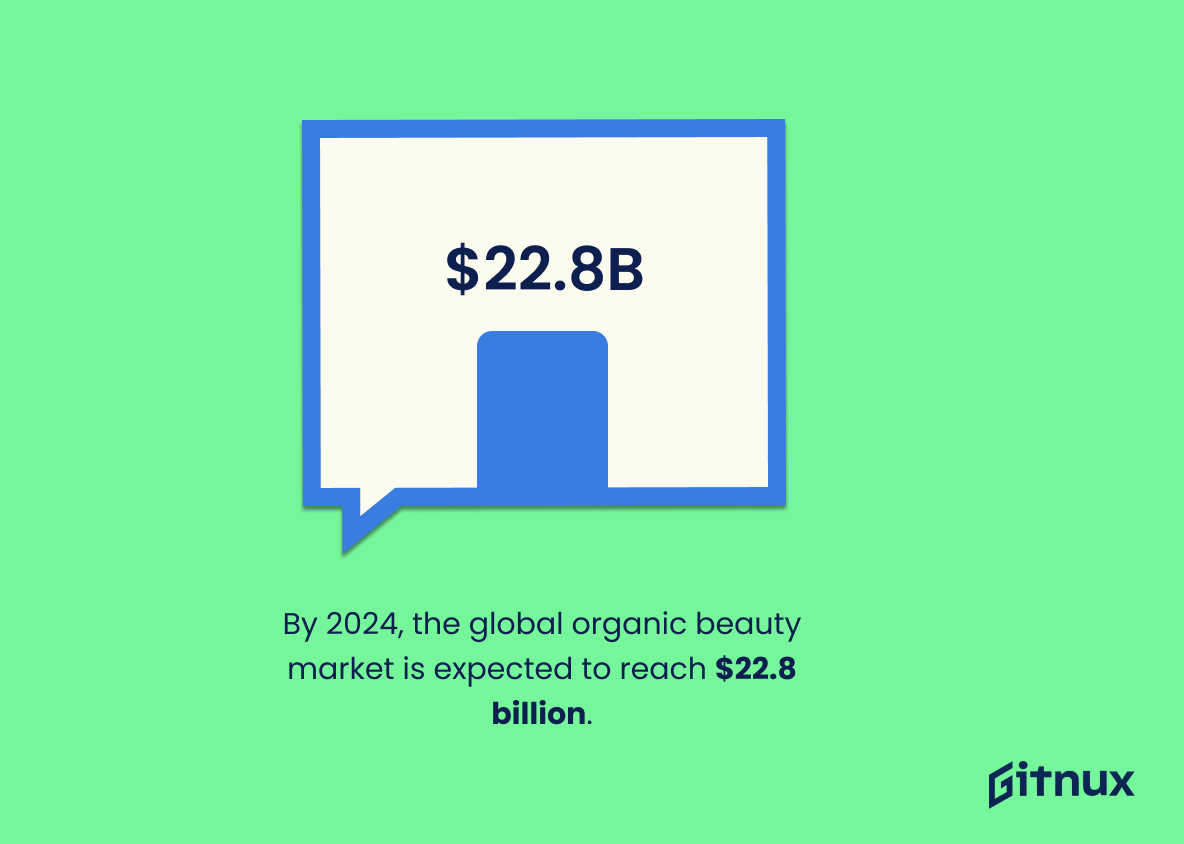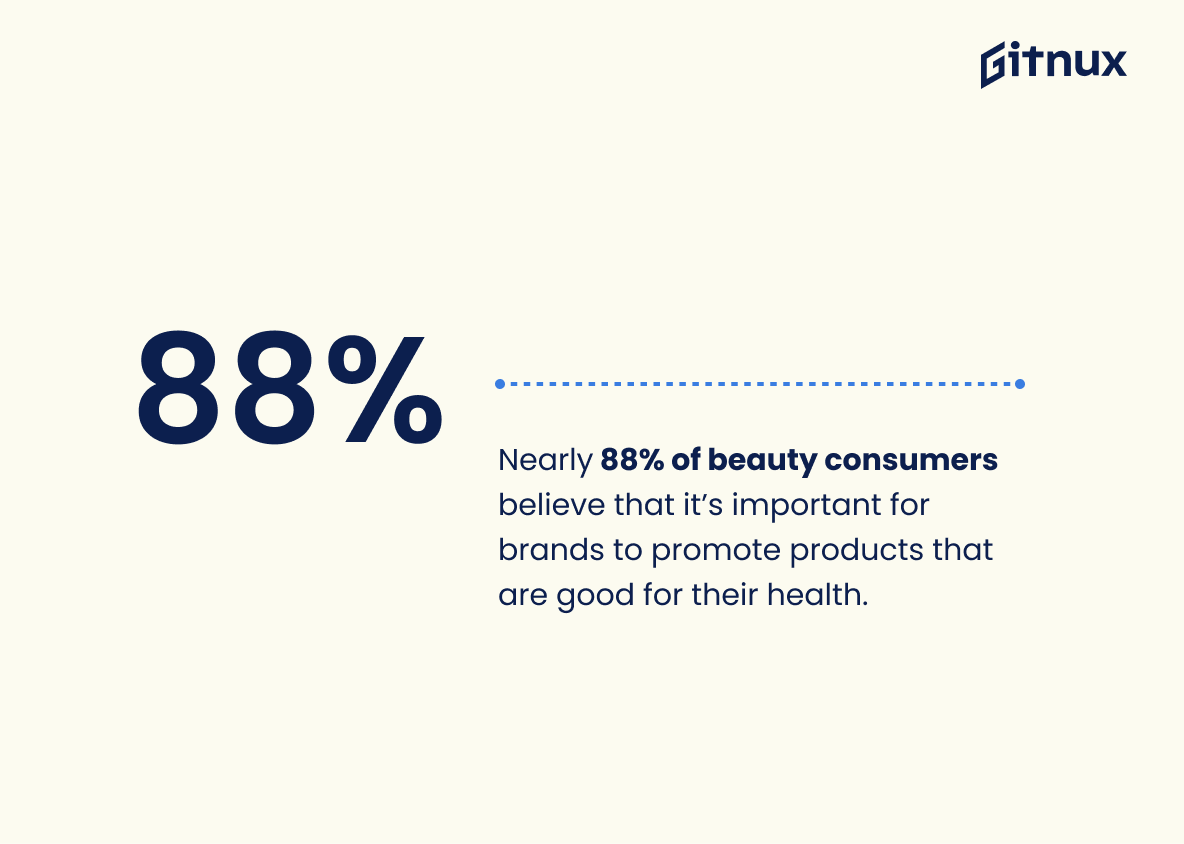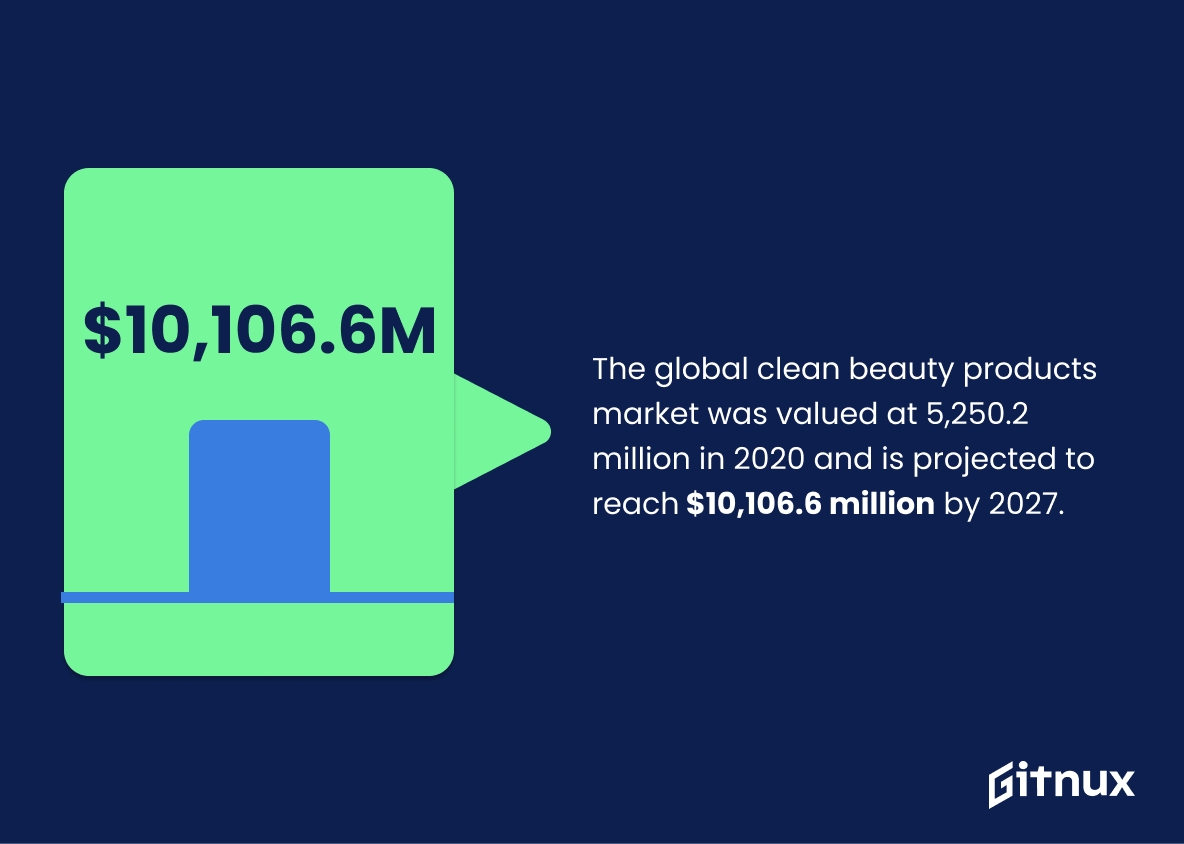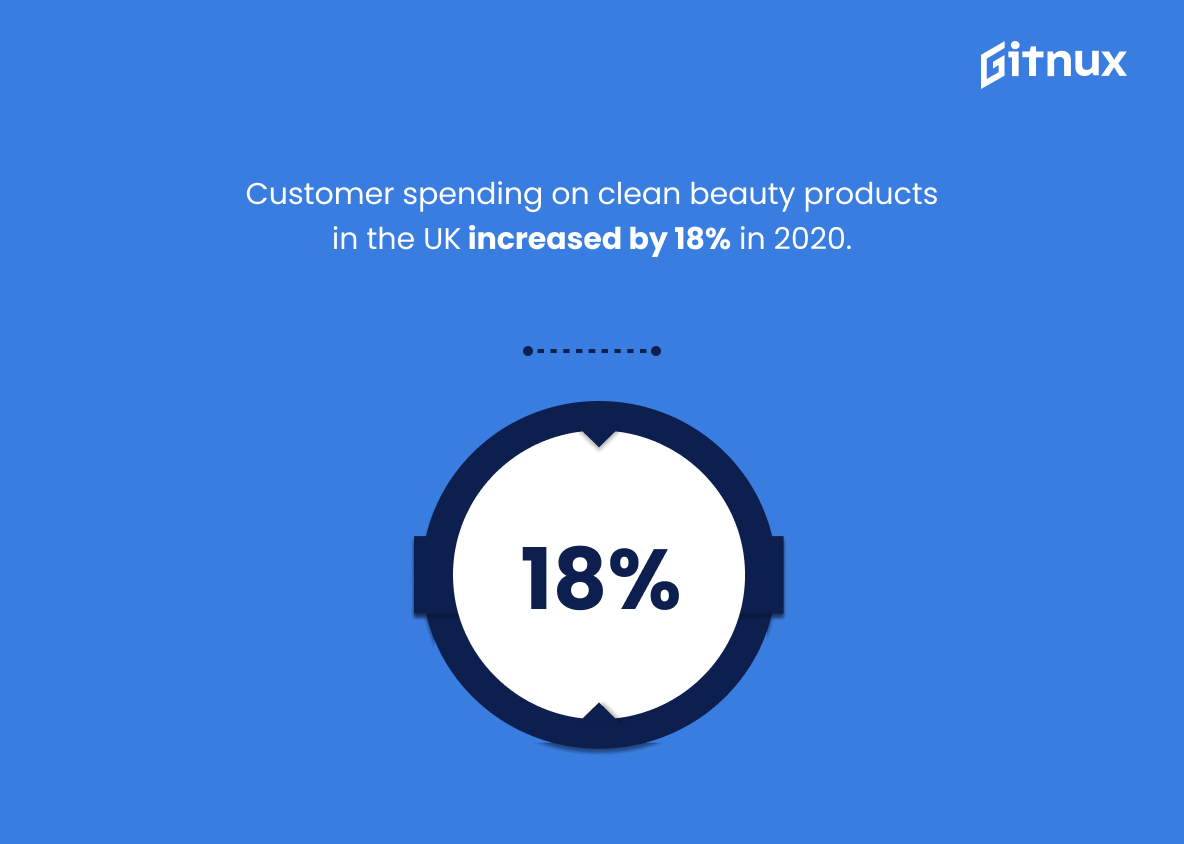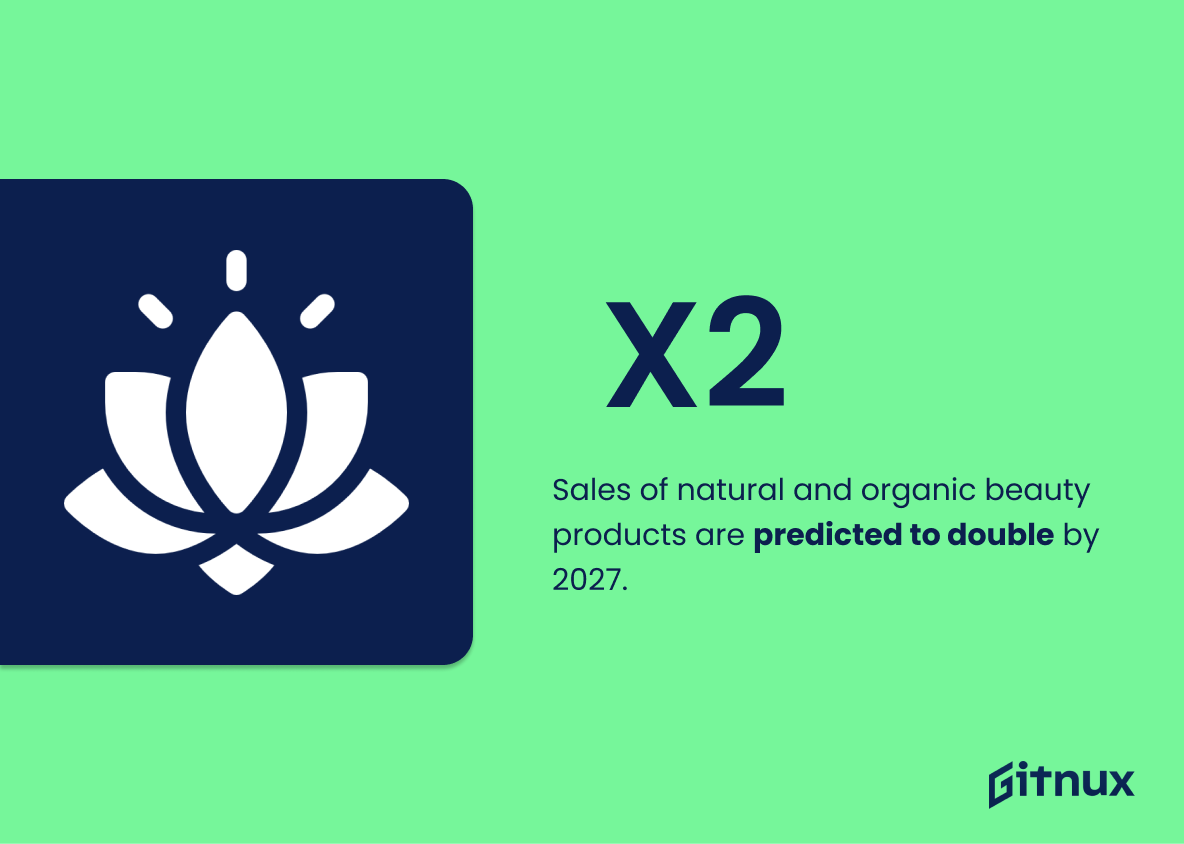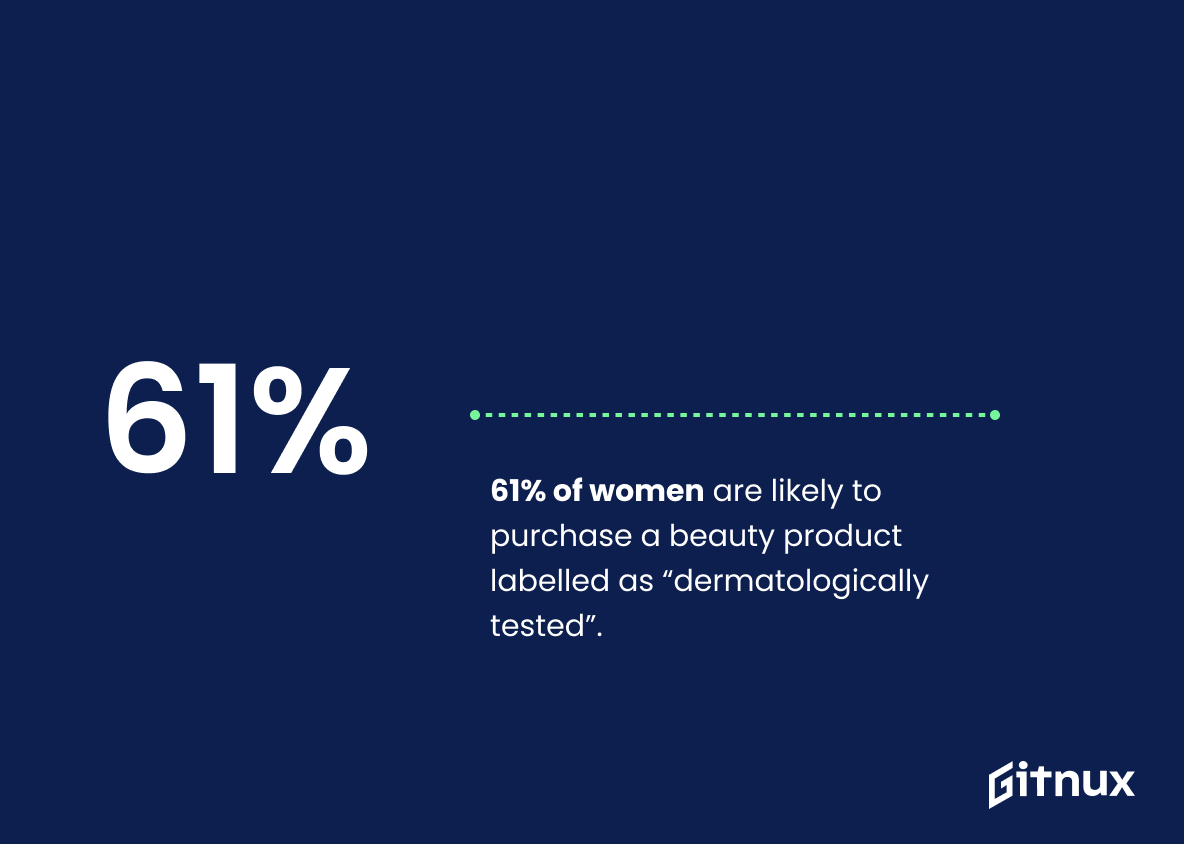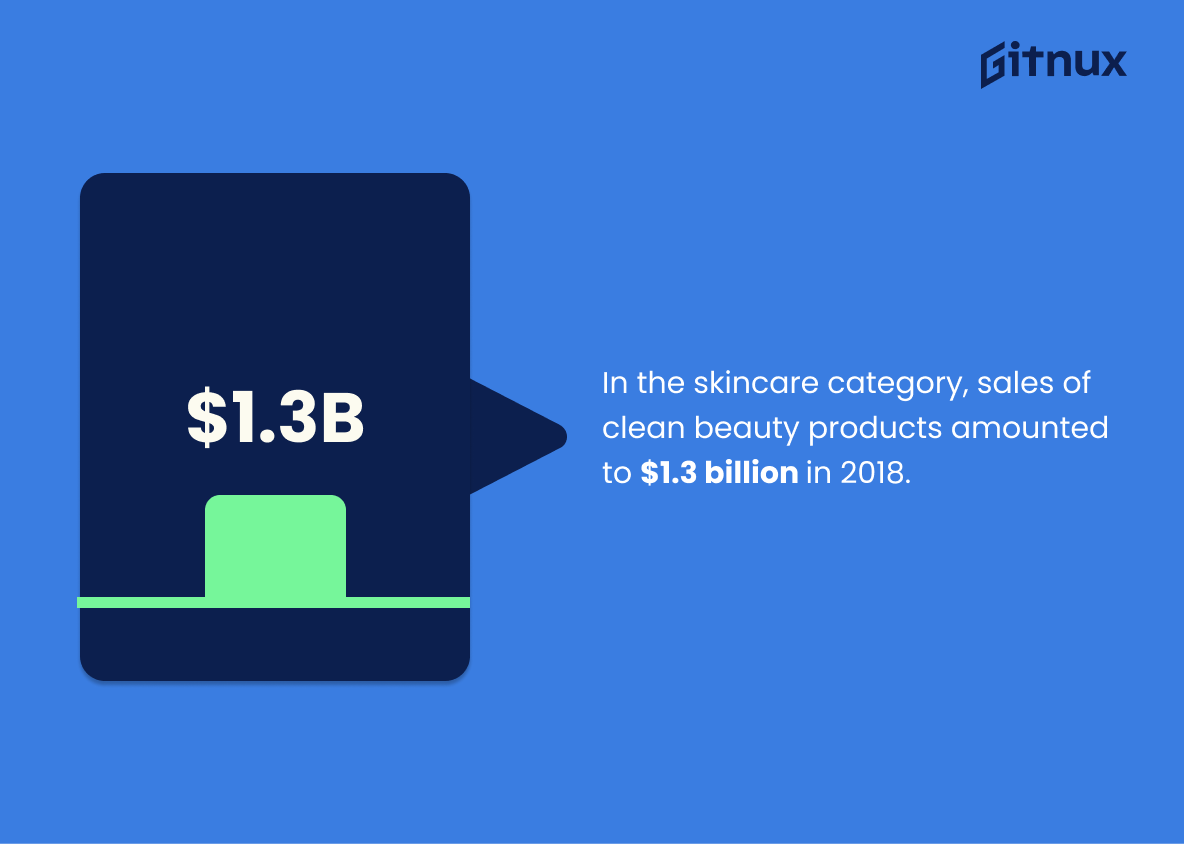The beauty industry is undergoing a profound transformation, painting its future with a green brush. Welcome to the era of Clean Beauty – skincare, makeup, and haircare products thoughtfully created without harmful ingredients. As consumers become more educated about their health and the environment, the shift towards Clean Beauty is more than a trend; it’s a conscious evolution in the way we perceive and consume beauty products.
Business moguls and startups alike have recognized this shift, seizing the opportunity to embrace transparency, sustainability, and ethical sourcing in the beauty sphere. In this blog post, we delve deep into the Clean Beauty Industry statistics, mapping the significant strides it has made over the years and outlining its potential future growth. Join us as we explore the numbers behind this transformative sustainable beauty revolution.
The Latest Clean Beauty Industry Statistics Unveiled
The clean beauty market is expected to reach $54.5 billion by 2027.
Foreshadowing a mighty surge in the clean beauty sector, it is projected that by 2027, the market value will soar to an astounding $54.5 billion. This staggering number presents a thesis that can reel in anyone: that the industry’s trajectory is not only pandemic-proof but also on a hyper-growth path.
It conveys a vivid panoramic of the increasingly conscientious consumer propelling clean beauty from the margins towards mainstream dominance. The inclusion of the metric in a blog post about Clean Beauty Industry Statistics paints a future laden with opportunities and growth, casting the spotlight on the immense potential for businesses, entrepreneurs, and stakeholders.
Haircare products are the fastest-growing segment in the clean beauty industry.
Diving into the vibrant world of clean beauty industry statistics, one cannot neglect the surging tide represented by haircare products. Manifesting the fastest rate of growth among all segments, this tide is reshaping the business landscape, signaling possibilities that were previously untapped, and prompting ready-for-change business entities to ride its crest.
Such a statistic beholds a treasure trove of information on evolving consumer patterns, spotlights the market’s brewing preferences, and alerts businesses to timely align their strategies accordingly. Moreover, it casts light on the paramount value the modern consumer attaches to green haircare alternatives, ultimately defining new trends for investment and innovation in the clean beauty industry.
More than 75% of women are likely to buy clean beauty products during a purchase.
In the realm of the Clean Beauty Industry, the stat that over 75% of women are inclined to purchase clean beauty products is a pivotal reflection of consumer patterns. It rings an enlightening bell, showcasing the beauty industry’s evolving landscape and the escalating female consumer drift towards health-conscious purchases.
This powerful metric is synonymous with a silent revolution – women switching their allegiance from conventional to clean, ethically-made, chemical-free beauty products. It underscores a heightened awareness and demonstrable shift in purchasing habits, setting the stage for future market dynamics and potential growth avenues for businesses in the clean beauty space.
Nearly 54% of women in the US look for products that are labelled as “no harmful chemicals.”
The clean beauty industry taps directly into the increasing consumer interest in health-conscious products. The relatively high proportion of women in the US – over half at 54% – actively seeking products labeled as containing “no harmful chemicals,” punctuates how this burgeoning industry is being fuelled. The market demand shows that consumers, particularly females, are readily embracing the clean beauty revolution.
This reveals not just the scope of opportunities for clean beauty brands, but also underscores the urgent need for traditional cosmetic companies to reassess, and perhaps reformulate, their products. These facts shine a light on the revolutionary changes sweeping across the beauty industry, ones driven by knowledgeable and discerning consumers.
Approximately 60% of women read product packaging to avoid certain ingredients.
Delving into the heart of the Clean Beauty Industry, one is struck by the stellar statistic that around three-fifths of women meticulously examine product packaging to steer clear of particular ingredients. This not only reflects the burgeoning consciousness about clean beauty, but also underscores the tacit demand for more transparency in cosmetic labeling.
A statistic like this is a beacon for marketers in the evolving landscape, guiding them to design products that are upfront about their ingredients, thus catering to the discerning consumer’s quest for safe, non-toxic beauty products. Essentially, it validates the rising focus on clean beauty and validates the industry’s trajectory towards natural, ingredient-conscious products.
“Clean Color Cosmetics” is expected to be the fastest-growing segment over the next seven years, with a CAGR of 5.5%.
As we glimpse into the crystal ball of beauty industry statistics, one shimmering detail catches the eye – “Clean Color Cosmetics” are racing toward a glittering future. Forecasted to sprint ahead with a Compound Annual Growth Rate (CAGR) of 5.5% over the upcoming seven years, this figure paints a vibrant picture of a trend that’s more than skin deep.
This key statistic gives our blog readers a sneak peek into the industry’s changing landscape, guiding them on where to focus their attention – or their makeup brushes. As participants, consumers, or entrepreneurs in the Clean Beauty sphere, knowing which segment is leading the growth marathon helps in making informed decisions, positioning strategies, or simply being on top of the beauty game.
By 2024, the global organic beauty market is expected to reach $22.8 billion.
Forecasting the global organic beauty industry to reach a staggering $22.8 billion by 2024 paints an eloquent vision of the future for clean beauty. It stands as a testament to the increasing consumer consciousness towards their health and the environment sparking a significant shift in buying behavior.
Not only does this projection reaffirm the escalating market potential for organic products, but it also reinforces the idea that businesses investing in clean beauty will likely reap exponential benefits. In essence, this revelation illuminates the trajectory of a revolution in the beauty industry – a resounding move towards ethical, organic, and sustainable practices.
Nearly 88% of beauty consumers believe that it’s important for brands to promote products that are good for their health.
Delving into the figure stating ‘Nearly 88% of beauty consumers believe that it’s important for brands to promote products that are good for their health’ unveils profound insights about consumer preferences and values in the context of the clean beauty industry. This statistic serves as a lucid reflection of the growing health consciousness among beauty customers. It amplifies an unmistakable clamor for clean beauty products, demonstrating how consumers are demanding transparency, health consciousness, and ethical practices from their preferred beauty companies.
In the realm of the clean beauty industry, this number signifies a paradigm shift in consumers’ buying behavior, advocating for a surge in demand for health-friendly products. Such a trend not only augments the market share of companies promoting clean beauty but also encourages other players to adapt their product lines, investing more in safer, healthier offerings. Highlighting this statistic in a blog post about clean beauty industry statistics underlines this growing trend and the power of health-conscious consumer behavior in shaping the beauty industry’s future.
The global clean beauty products market was valued at 5,250.2 million in 2020 and is projected to reach $10,106.6 million by 2027.
Spotlighting the stunning trajectory of the clean beauty products market paints an impressive upsurge vignette, with an upswing from a value of $5,250.2 million in 2020 to a projection of skyrocketing to $10,106.6 million by 2027. This vivid financial arc grabs our attention as it underlines the growing popularity and increasing demand for clean, green, and eco-friendly beauty products.
It highlights a shift in consumer interests and appetites, favoring brands that advocate for healthful ingredients and ethical production methods. Deciphering these numbers, vanguards, influencers, and investors within the beauty industry get a compelling glimpse of emerging trends and potential opportunities for growth and innovation.
Customer spending on clean beauty products in the UK increased by 18% in 2020.
Witnessing an elevated growth rate of 18% in customer spending on clean beauty products in 2020 lays bare the rich cultivation of consumer consciousness regarding beauty industry ethics in the UK. This not only breathes life into the evolution of British beauty industry trends, but also kindles the already sparkling flame of clean and sustainable beauty market – a brilliant testament to consumer awareness and market adaptation.
A surge of continual growth in this sector creates a narrative of shift towards prioritizing environmentally responsible practices, as well as emphasizing pure, chemical-free components in beauty products. In essence, the statistic vividly paints the UK’s demographic as increasingly conscious and ethically sound buyers, striding towards a cleaner future, one purchase at a time.
Sales of natural and organic beauty products are predicted to double by 2027.
In painting an eloquent picture of the burgeoning Clean Beauty Industry, envision a trend that escalates with compelling momentum. Envisage the sales of natural and organic beauty products, currently standing on a robust base, destined to amplify twofold by the year 2027. This envisioned spike in purchase patterns gives us an insightful preview into the rapidly changing dynamics of consumer preferences.
The imminent double-digit surge signals not only a thriving market for clean beauty products but also a significant shift of societal values towards a more sustainable and health-conscious lifestyle. As a reflection of this seismic shift, manufacturers, entrepreneurs and investors are definitely getting an alluring snapshot of the market potential that’s blooming before their eyes in the Clean Beauty Industry.
This potent forecast showcases the potential windfall for those investing in the organic niche, of cashing in on the green wave. Furthermore, it reinforces the demand for more transparency, advocating for consumers’ right to know what’s in the products they slather onto their skin. As the needle swings towards mindful consumerism, this escalating number is a clarion call for brands to align their philosophy with the clean beauty revolution.
73% of Millennial women always check if the product is labelled as “all-natural” before purchasing it.
The vitality of this statistic lies in its articulation of current consumer behavior patterns, particularly among Millennial women. It sheds light on an escalating trend towards conscious consumption within the Clean Beauty Industry. No longer just an after-thought, the “all-natural” label has evolved into a crucial factor in purchase decisions for 73% of Millennial women.
This not only underlines the growing importance of transparency in ingredient sourcing and formulation, but also emphasizes the discerning nature of contemporary consumers. Navigating these enlightened demand dynamics will be key for businesses seeking to create a significant and sustained impact in the Clean Beauty Industry.
61% of women are likely to purchase a beauty product labelled as “dermatologically tested”.
Examining this fascinating statistic reveals an intriguing consumer behavior trend in the clean beauty industry. The fact that 61% of women show a propensity to buy a product labeled as “dermatologically tested,” underscores the premium placed on scientific verification in the world of beauty.
This trend seems to suggest that for a substantial percentage of women, the assurance of a product undergoing rigorous scientific testing goes beyond mere marketing gimmicks — it’s a pivotal decision-making factor in their buying habits. Thus, this statistic not only sheds light on current purchasing preferences, but may also provide a roadmap for companies wishing to tailor their products to consumer demand. Essentially, it could catalyze an industry-wide shift towards increased transparency and rigorous testing procedures in the beauty world.
In the skincare category, sales of clean beauty products amounted to $1.3 billion in 2018.
Delving into the monetary prowess of the clean beauty industry, one cannot simply overlook the groundbreaking figure of $1.3 billion. This colossal sum, solely generated from clean beauty product sales in 2018, exhibits the substantial economic impact and consumer movement steering towards this health-conscious sector in skincare.
The infusion of this vital statistic into our blog post paints a richer, more comprehensive picture of the clean beauty market – echoing its rapidly proliferating success and opening up dialogues surrounding market trends, consumer preferences, and leading product types.
53% of consumers in 2018 were primarily purchasing skin care products with natural or organic components.
In deciphering the landscapes of the Clean Beauty Industry, one cannot overlook the compelling statistic that 53% of consumers were on a quest for natural or organic skin care products in 2018. This nugget of data not only underscores a shifting consumer consciousness towards cleaner, safer beauty alternatives but also sets the momentum for an upward trajectory in the marketplace.
With over half the consumer bracket leaning towards ‘clean’, the Clean Beauty Industry positions itself amidst vibrant growth potentials. Therefore, this statistic serves as both a barometer for current trends and a compass guiding future industry directions.
Conclusion
The clean beauty industry has demonstrated significant promise and growth, reflecting consumers’ increasing awareness and prioritization of health, wellness, and sustainability. As industry statistics reveal, demand for natural, organic, and toxin-free beauty products promises to drive further expansion in the market. However, it’s imperative to uphold transparency and enforce stringent regulations to maintain consumer trust.
To stay competitive, beauty brands must continuously innovate, cater to personalized customer needs, support ethical sourcing, and embrace sustainable practices. Remember, the future of beauty is not just about looking good—it’s about feeling good and doing good too.
References
0. – https://www.www.cosmeticsdesign.com
1. – https://www.www.statista.com
2. – https://www.www.cosmeticsdesign-europe.com
3. – https://www.www.ecommerce-nation.com
4. – https://www.www.beautyindependent.com
5. – https://www.beautybusinessjournal.com
6. – https://www.www.pymnts.com
7. – https://www.www.alliedmarketresearch.com
8. – https://www.www.grandviewresearch.com
9. – https://www.www.glamourmagazine.co.uk
10. – https://www.www.prnewswire.com
